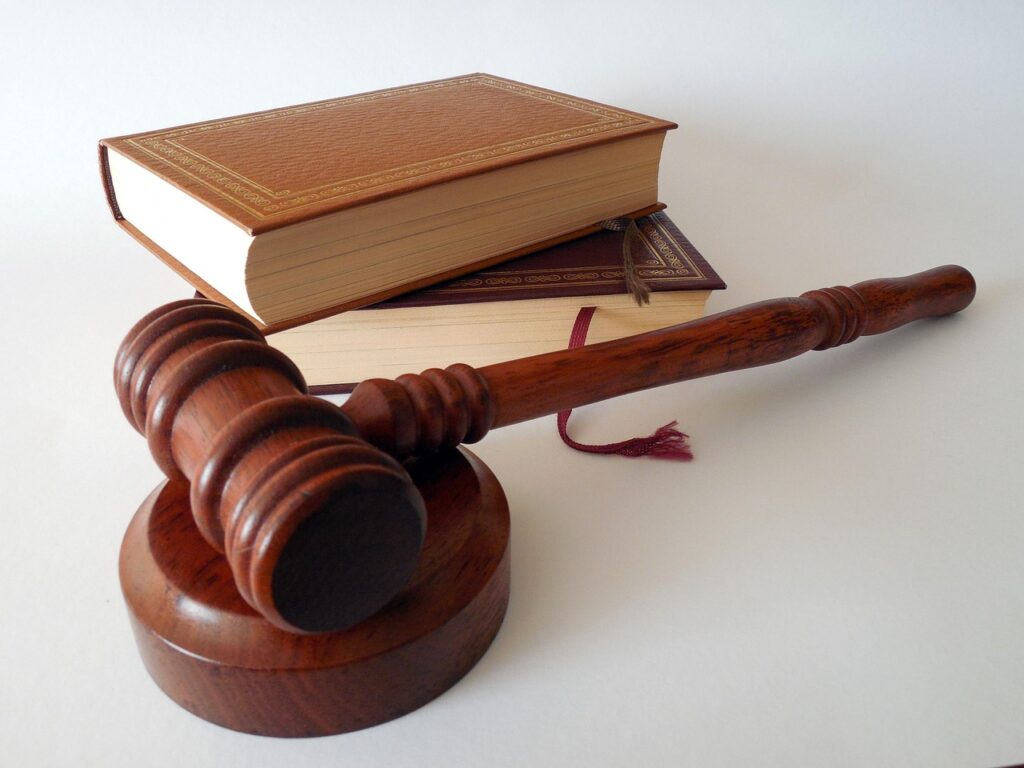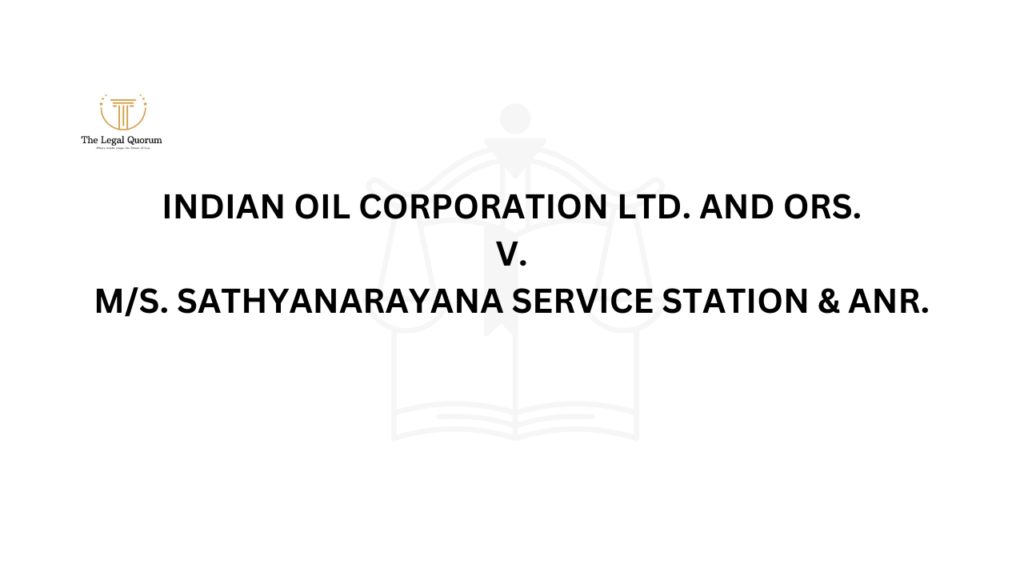Published On: November 17th 2025
Authored By: Prostuti Dutta
University Law College
Court: Supreme Court of India
Bench: Chief Justice Dipak Misra, Rohinton Fali Nariman, A.M. Khanwilkar, D.Y. Chandrachud, Indu Malhotra
Date of judgment: 1st August, 2018
Relevant Statutes: (i) Article 14, 15, 17, 19(1), 25 and 26 of Indian Constitution
(ii) Kerala Hindu Places of Public Worship (Authorisation of Entry) Act, 1965
Brief Facts:
Sabarimala Temple is a Hindu temple located in Sabarimala region of Pathanamthitta in Kerala. It is a temple of great importance and this temple is primarily devoted to Lord Ayyappa who was believed to be born out of the union of Lord Shiva and Lord Vishnu (in the form of Mohini). This temple is of great importance for the Hindu community because it is believed that Lord Ayyappa himself instructed the king on how to worship him and the methodology of penance. The methodology of penance here is called Vratham where a devotee has to follow a set of rules for 41 days straight to worship him. The Vratham includes a lot of rules like living in isolated place, not indulging in physical relation with spouse, preparing one’s own food, etc and this is done to make the devotee pure and unpolluted in bot physical and mental ways. Vratham is the reason why women of the age 10-50 years were not allowed in the temple because it is believed that women of this age cannot perform Vratham because they undergo their menstrual cycle during the 41 days cycle and menstruation makes the women impure.
Women of this age were also restricted because it was believed that their presence in the temple can cause disturbance in the celibacy of the Lord Ayyappa.
Women of the age between 10-50 years being restricted to enter the temple was the main reason for which gave rise to the writ petition under Article 32 of Indian Constitution. The petition posed the questions before the Supreme Court whether this restriction violates fundamental rights under Article 14, 15, 17, 25 and 26 of Indian Constitution.
Timeline of the case:
An appeal was first filed before Kerala High Court to uplift the restriction upon women in 1990, which was not supported by the Kerala High Court. In 2006 Young Lawyer’s Association filed a petition against this restriction. In 2018 the Supreme Court gave the final judgment of this case allowing women to enter the temple.
Legal Issue Involved
- Whether women of ages 10-50 years which have been restricted from entering the temple premises is a violation of Article 14, 15 and 17 of Indian Constitution?
- Whether this restrictive practice is valid under Article 25 and 626 of Indian Constitution?
- Whether Rule 3(b) of the Kerala Hindu Places of Public Worship (Authorisation of Entry) Act, 1965 permits the ban of entry of women into the Sabarimala Temple?
- Does a religious institution have the power to impose such restrictive practices under Aricle 26 of Indian Constitution?
Arguments
Petitioners: The Indian Young Lawyers Association, Dr. Laxmi Shastri, Prerna Kumari, Alka Sharma, and Sudha Pal constituted the list of petitioners.
Arguments by petitioners:
The petitioners stated that women of the age of 10-50 years being restricted to enter the temple is a violation of the following fundamental rights guaranteed to every citizen if India. The rights are:
- Article 14: equality before law and equal protection of the laws to all people irrespective of caste, race, sex, religion and place of birth
- Article 15: discrimination by the state against any citizen on the basis of religion, race, caste, sex, or place of birth
- Article 17: abolishes “untouchability” and prohibits its practice in any form.
The petitioner argued that exclusion on the basis of whether a devotee is a man or a woman is a practice that violates fundamental rights guaranteed under Article 14 and 15 of Indian Constitution.
Also since women were excluded because of menstruation and them considering menstruating women impure violates Article 17 of Indian constitution which prohibits untouchability. Women being considered impure and believed to be a disturbance to the celibacy of Lord Ayyappa was a form of untouchability too.
The petitioner also argued that this restrictive practice of excluding women cannot be considered a valid practice under Article 25 ad 26.
Article 25 of Indian Constitution states that every citizen is given freedom to profess, propagate and practice any religion while Article 26 of Indian Constitution states that every religious denomination is granted freedom to manage its own religious affairs. The petitioner pointed out that exclusion or restrictive practice cannot be part of any religion. They further provided proofs that women in earlier age were allowed to enter the temple to feed the first rice to their children and the restrictive practice is running from last 60 year only.
The petitioner further argued that Rule 3(b) of Kerala Hindu Places of Public Worship (Authorisation of Entry) Act, 1965 violates Article 14, 15 and 25 of India Constitution and further stressed that restricting women to enter the temple premises is unconstitutional.
Respondents: The alleged rights were claimed against The State of Kerala; Travancore Devaswom Board; Chief Tanthri of Sabarimala Temple; District Magistrate of Pathanamthitta; Nair Service Society; Akhil Bhartiya Ayyappa Seva Sangham; Ayyappa Seva Samithi; Ayyappa Pooja Samithi; Dharma Sanstha Seva Samajam; Akil Bhartiya Malayalee Sangh; sabarimala Ayyappa Seva Samajam; Kerala Kshetra Samarak Shana Samithi; Pandalam Kottaram Nirvahaka Sangham; sabarimala Custom Protection Forum.
Arguments by respondent:
Respondent denies all the accusations of the restrictive practice being violation to Article 14, 15 or 17 of Constitution and states that the restrictive practice is only carried out to maintain the celibacy of the Lord Ayyappa. The respondent highlights the importance of the practice of Vrutham as it is essential part of worshippin the deity which cannot be carried out by women due to clash of their menstrual cycle with the 41 days Vrutham practice.
Respondent further stated that this temple is a religious denomination because devotees of Lord Ayyappa have to follow the practice of Vrutham and this differentiates Sabarimala Temple from any other Hindu temple.
Judgment
The bench of 5 judges provided a judgment by a majority of 4:1 in favour of petitioner and allowed the entry of women into the temple.
Chief Justice Dipak Misra, Rohinton Fali Nariman, A.M. Khanwilkar and D.Y. Chandrachud held that Rule 3(b) of Kerala Hindu Places of Public Worship (Authorisation of Entry) Act, 1965 discriminates Hindu women and held it unconstitutional. The judges further held that menstruation of women has no relation to them being excluded from rights they are given under Article 25 and such exclusion is violation to Article 14, 15 and 17.
Justice Indu Malhotra provide a dissented view stating essential religious practices should be decided on the basis of faith of the people and not by the court. She held that court should not have the final say and she supported the b of women of the age between 10-50 years into the temple.
Ratio decidendi:
A ratio decidendi is the legal principle on which the decision of court is based. In this case the rationale is the restrictive entry of women into the Sabarimala temple was violation of Article 14, 15, 17 and 25 of Indian Constitution. The Rule 3(b) of Kerala Hindu Places of Public Worship (Authorisation of Entry) Act, 1965 that prohibited the entry of women into the temple was struck down after being held unconstitutional in nature.
Obiter Dicta:
Obiter Dicta is nothing but an observation made by court that are non-binding in nature. In this case the Chief Justice stated along with his judgment that “an attribute of devotion cannot be subjected to the rigidity and stereotypes of gender.” Justice D.Y. Chandrachud upheld the importance of fundamental principles in the Preamble of the Constitution of India.
The bench made a remark that “devotion cannot be subjected to gender discrimination” which highlights the fact that devotion is equal for everyone irrespective of gender.
Final decision:
The Sabarimala Temple case brought into light various aspects of the society where discrimination was practice on the grounds of religion and faith. Women were refrained from entering the temples and were regarded as impure due to their menstruation which is in reality the natural and biological process of the female human anatomy. Freedom of practicing, professing and propagating a religion should not be discriminating towards a section of society in a way that other fundamental rights guaranteed to the citizens under the Constitution of India are violated.
The Supreme Court’s decision to allow women to enter the temple premises has highlighted that religious practice cannot be greater than gender equality in a society. Since everyone is guaranteed equal rights to practice a religion, women cannot be held back from enjoying the same rights as men.
After this judgment as ruled out by court, protest was observed by many religious sections of the society who were against the idea of letting women of menstruating age to enter into the temple premises. Many protestors including women chose to be violent against other women who were there to visit the temple. Many policemen were incorporated to protect the women trying to enter the temple from being attacked by angry protestors.
Some protestors even stated that they will let enter women into the temple if a machine is invented to check whether they are menstruating or not.
The social impact of this judgment is not in the hands of the court, though in reality the Honourable Supreme Court’s decision has brought a revolution by eradicating a long-run discriminatory practice against the women curbing them from the rights they are given under the Constitution.




